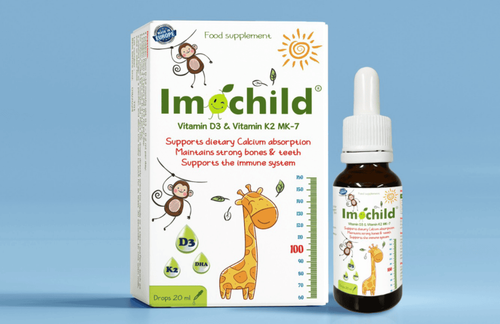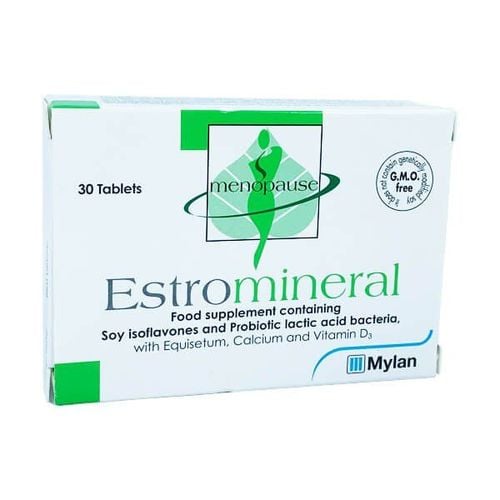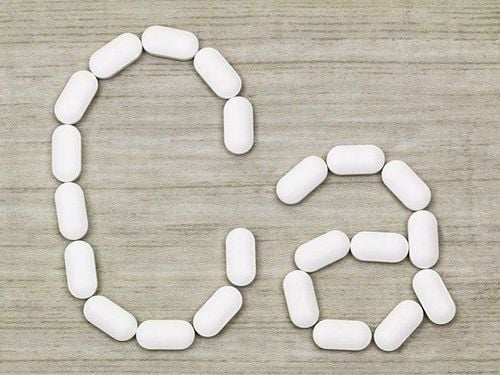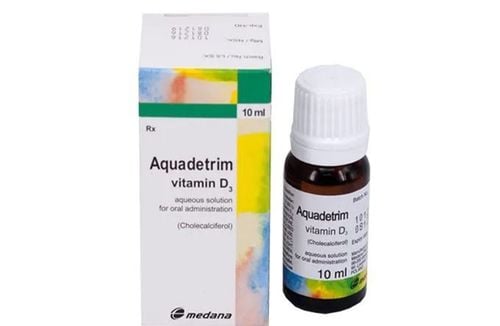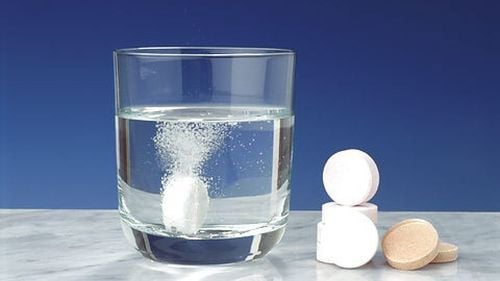This is an automatically translated article.
S-DiCalxi is a calcium supplement for pregnant women, adult children or elderly people who need to increase calcium intake. In this article, we will learn about information, uses and how to store dicalcium.
1. What is Dicalcium?
Dicalcium belongs to the group of functional foods in the form of tablets, manufactured and packaged in a box of 3 blisters, each blister of 10 tablets. The drug contains two main ingredients, Calcium 500mg and Vitamin D3 200IU manufactured by GMP util in the United States.
2. What are the ingredients of dicalcium?
2.1. Calcium is an extremely important element for the body not only forming the skeletal structure of the body but also important in metabolism and nerve conduction. In general, the uses of calcium can include:
The main task of the element calcium is to coordinate with vitamins of group D to build strong bones and teeth. In addition, calcium also participates in and functions to maintain blood pressure and conduct cardiac electrical impulses to help the heart beat normally. Calcium also plays a very important role in the body's blood clotting process, preventing bleeding when blood vessels are damaged. Calcium helps regulate the contraction of muscles, the most important of which are cardiac muscle cells. Calcium participates in the digestive process to help absorb vitamin B12 in the digestive tract; Supports the process of receiving, responding to and transmitting nerve signals. Calcium also plays an essential role in the production of certain hormones by the body such as insulin. 2.2. Ingredients Vitamin D3 Vitamin D3 is absorbed from food in the intestinal mucosa thanks to bile salts and lipids, and then accumulates in the liver, fat, bone, muscle and intestinal mucosa. Vitamins are excreted from the body mainly through the biliary tract to a small part. In the blood, vitamin D3 is bound to the plasma alpha-globulin component. Vitamin D3 is metabolized in the liver and kidneys to 1,25-dihydroxycholecalciferol by the enzyme hydroxylase. These are active metabolites. Vitamin D3 is mainly involved in the body's bone-building process by acting on the metabolism of inorganic calcium and phosphorus, which are the main inorganic substances that make up bones. Vitamin D3 helps to increase the absorption of calcium and phosphate from food in the intestine. In the kidney, vitamin D3 helps increase calcium reabsorption in the proximal tubule and is especially involved in the calcification of growth cartilage.
As mentioned, vitamin D3 is one of the body's essential vitamins. Vitamin D3 has a major role in calcium metabolism and makes up the body's skeleton. In addition, vitamin D3 also has the following functions:
Vitamin D3 helps to improve the absorption of calcium into the body in the small intestine and mobilizes calcium from the bones into the blood, in the kidneys, the vitamin helps to reabsorb calcium and phosphate ions of the tubules. hover close. In the developing age, vitamin D3 directly affects the calcification of the growth cartilage, so it plays a paramount role in the development of children's bones. Regulates blood calcium levels: helps keep blood calcium levels constant. In addition, vitamin D3 also plays a role in the differentiation of epithelial cells. Recently, vitamin D3 is also used to inhibit the proliferation of epithelial cells and melanin-secreting glands, breast cancer... When vitamin D3 deficiency, the digestive tract and the body do not absorb enough calcium and phosphorus, causing blood calcium levels decrease. The body then mobilizes calcium from the bones into the blood to stabilize blood calcium levels. If the deficiency is prolonged, it will result in slow growth of children, rickets, bow-shaped legs, mental retardation, delayed walking, delayed fontanelle. In adults, it is easy to have osteoporosis, brittle bones, thin and fragile. Pregnant women when vitamin D3 deficiency can lead to some defects in the bones of the fetus.
3. Uses of Dicalcium
The drug contains an abundant calcium content combined with vitamin D3 which is an important vitamin in the body's calcium metabolism. Therefore, its main use is to help supplement calcium for those who are at risk of deficiency or need to increase calcium requirements such as pregnant women or women who are breastfeeding, in children with rickets or in growing age, and may help prevent osteoporosis in the elderly.
Anti-rickets, increase intestinal calcium absorption, affect bone metabolism and absorption of calcium phosphorus.
Calcium drugs are indicated in patients:
Rickets Convulsions, convulsions due to calcium deficiency Osteomalacia.
4. Dosage - how to use
For infants and adults can take the drug orally. Rickets prevention must be carried out early and continuously until the end of 5 years. Every 6 months, use 1 dose of 5mg (200,000UI), the dose will be 10mg (400,000UI) if the child rarely gets to be in the sun or has dark skin.
Treatment of convulsions, convulsions due to calcium deficiency: vitamin D treatment is the same as the dose indicated to prevent rickets and needs to be combined with calcium salts.
Contraindicated to use calcium in patients with syndrome of hypercalcemia, hypercalcemia in the urine, calcium stones, hypersensitivity to vitamin D, patients lying motionless (for high doses).
Side effects when overdosing can cause hypercalcemia, hypercalcemia, hypercalciuria, joint pain. If used for a long time, it can cause kidney stones and increase blood pressure. Also may experience weakness, fatigue, headache, nausea, vomiting, diarrhea, brittle bones...
Please dial HOTLINE for more information or register for an appointment HERE. Download MyVinmec app to make appointments faster and to manage your bookings easily.





